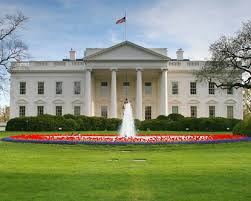Highlighting some recent news for Holodomor Awareness Week
National Holodomor Memorial Day – November 28, 2009
TORONTO, Nov. 24 /CNW/ – Saturday, November 28 marks Holodomor Memorial Day in Canada. Canadians will honour the memory of the victims of this famine-genocide with a moment of silence at 9:00 a.m. and light candles of remembrance in their homes. Memorial services will be celebrated in churches across the country on Sunday, November 29.
On Friday, November 27, Holodomor Memorial Day will be marked in schools of the Toronto District, Hamilton-Wentworth District and Hamilton-Wentworth Catholic District School Boards.
Supporters gather to remember genocide in Ukraine
Every November, Leoniv Korownyk revisits one of the darkest periods in Ukrainian history.
Korownyk, officials and supporters gathered at the legislature yesterday for a service that recognized Bill 37 and commemorated those who died as a result of the man-made famine and genocide of 1932-1933 in the Ukraine.
Bill 37, passed on Nov. 4, 2008, declared every fourth Saturday in November as Ukrainian Famine and Genocide (Holodomor) Memorial Day in Alberta. The service was hosted by Ken Kowalski, speaker of the legislative assembly of Alberta, and featured Premier Ed Stelmach along with other officials and survivors of the genocide.
Lemkin: Holodomor ‘classic’ genocide
Because of the horrors committed by Nazi Germany in World War II what is often forgotten, however, is that Lemkin’s thinking about an international law to punish perpetrators of what he originally labeled the “Crime of Barbarity†came not in response to the Holocaust but rather following the 1915 massacres of Armenians, Greeks and Assyrians within the Ottoman Turkish empire.
Likewise overlooked were Lemkin’s views on Communist crimes against humanity. In a 1953 lecture in New York City, for example, he described the “destruction of the Ukrainian nation†as the “classic example of Soviet genocide,†adding insightfully:“the Ukrainian is not and never has been a Russian. His culture, his temperament, his language, his religion, are all different…to eliminate (Ukrainian) nationalism…the Ukrainian peasantry was sacrificed…a famine was necessary for the Soviet and so they got one to order…if the Soviet program succeeds completely, if the intelligentsia, the priest, and the peasant can be eliminated [then] Ukraine will be as dead as if every Ukrainian were killed, for it will have lost that part of it which has kept and developed its culture, its beliefs, its common ideas, which have guided it and given it a soul, which, in short, made it a nation…This is not simply a case of mass murder. It is a case of genocide, of the destruction, not of individuals only, but of a culture and a nation.â€
The Man who expaosed Stalin and the nazis
Welsh investigative reporter Gareth Jones believed in the truth. In the early 1930s, he travelled through Nazi Germany and Stalin’s Soviet Union recording the grim realities of nascent dictatorships. As a new exhibition of his writing opens, Alex Donohue goes in search of Jones’ legacy
 The design for the Ukrainian Canadian Archives and Museum of Alberta on Jasper Avenue was one of 10 winners at the 2009 Edmonton Urban Design Awards Wednesday night.
The design for the Ukrainian Canadian Archives and Museum of Alberta on Jasper Avenue was one of 10 winners at the 2009 Edmonton Urban Design Awards Wednesday night. Astonishingly, in America, the National D-Day Memorial is honoring Stalin by placing his bust on a pedestal at its museum in Bedford, Virginia.
Astonishingly, in America, the National D-Day Memorial is honoring Stalin by placing his bust on a pedestal at its museum in Bedford, Virginia.
 From the
From the 